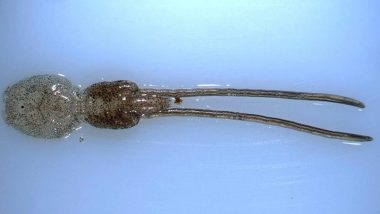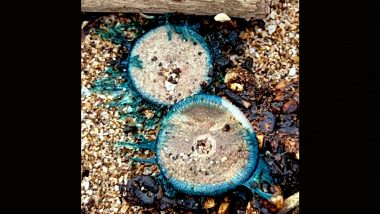Another day, another crisis and another set of consequences. This year we have seen so much, forest fires, oil spills, volcanic activity, tropical storms amid the crisis of coronavirus. Beaches in New Jersey are now riddled with itchy sea lice following a tropical storm. Tropical Storm Isaias has pushed up these jellyfish larvae from Florida to Jersey. They can cause skin rashes and irritation to people if they come in contact. We tell you more about these creatures, are they dangerous and how can they be dealt with. Rare Blue Sea Dragons Wash Up on Beach in Texas, But Here's Why One Shouldn't Touch These Sea Slugs (View Pics).
Cases of sea lice have been reported from Ocean City, Avalon and Stone Harbor. It is a cause of concern because these are actually jellyfish larvae. And spotting of stinging jellyfish at New Jersey's waters is never seen before. Environmentalists think it is the tropical Storm Isaias which carried the larvae in warm currents to the north. What's bothersome about these tiny creatures are they are impossible to spot in the water. But they can easily get stuck on people's skin or bathing suits. Any slight contact with them will give one the sting. Mysterious Alien Creature Washes Up on Queensland Beach in Australia and Nobody Knows What It Is (View Creepy Pics).
What Are Sea Lice? Are They Dangerous?
Even if the name says lice, they are not the insects that hide in hair. But they are very tiny larvae. They belong to two marine species that sting- the thimble jellyfish and a sea anemone. The larvae are transparent, so one cannot see them. They are just about two to three millimetres long. They get trapped in hair, or in between your bathing suit and your skin. Once you get out of the sea, the water drains out but the larvae stick on your suit or on your skin.
When they sting they release their toxins, the same ones that are there in a grown jellyfish. But because they are so tiny, the effect is less. However, if they come in contact with your skin for too long, you are likely to develop rashes. Other symptoms include headache, chills, fever, nausea, and abdominal cramps. If the symptoms continue for long, you may have to be taken to the hospital, but that is rare. Jellyfish Attack! More Than 5,000 People Stung by Bluebottles Jellyfish at Australian Beaches.
How to Treat Sea Lice Stings?
An immediate reaction of many people when they experience a sting is to put water on it for some relief. But putting water will only make the larvae to sting more. Take off your bathing suit as soon as possible and take a shower with nice clean water. Wash off your suit in hot water with a good detergent. You can apply calamine lotion on the part of your rash 2-3 times a day. Take anti-inflammatory medicines in case the pain doesn't subside. Consult a doctor if you experience severe symptoms.
(The above story first appeared on LatestLY on Aug 17, 2020 12:58 PM IST. For more news and updates on politics, world, sports, entertainment and lifestyle, log on to our website latestly.com).













 Quickly
Quickly




















